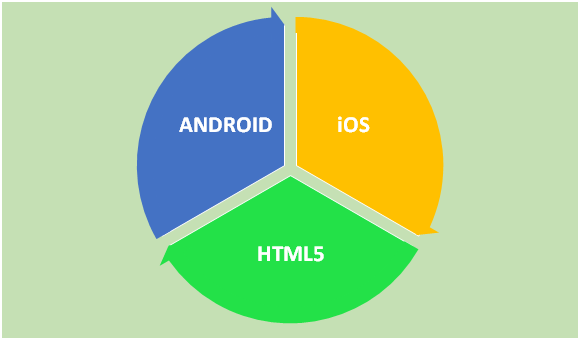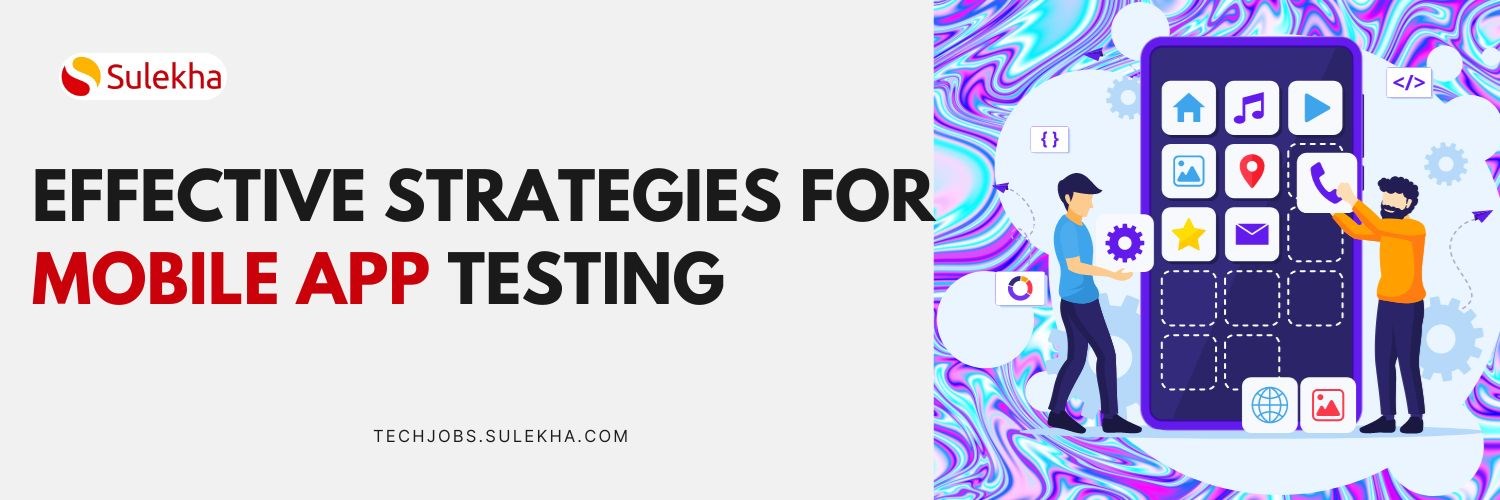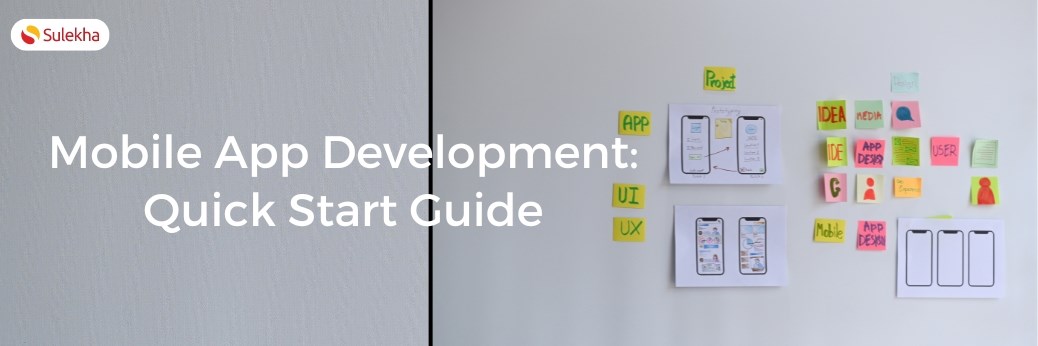Have a Mobile App Idea? Validate it with These Steps
The staggering popularity of applications for mobile devices only goes to show how far technology has come. Barely a decade ago, mobile technology took its nascent steps towards mobile internet services. And now, smartphones with round-the-clock internet services are everywhere. With phones of storage capacities of 16 GB and above being incredibly commonplace nowadays, there’s a crazy rush for downloading trending applications. Games, language tutorials, guitar tuners, taxi booking, multimedia players, dating services; mobile applications are delivering almost every service imaginable to consumers, and this has paved the way for mobile apps development to become a successful career choice as well.
However, the ease of brand new applications getting noticed and then becoming commercially successful no longer exists. Head to either Apple’s App Store or Google Play, and the mind-boggling plethora of applications for each and every category is sure to conjure up some choice issues. For aspiring mobile apps development professionals, it’s a risk to make huge initial investments without any guarantee of success. A failed product may result in substantial financial losses, and the developers’ credibility may take a significant hit. Therefore, if you happen to stumble upon an idea that has something going for it, keep the following tips in mind before you launch it as an app.
Know What’s Hot and What’s Not!
The root of every commercially successful mobile application lies in the idea, and how popular it is with the masses. You might have an idea up your sleeve, but is it good enough to make the grade? Thankfully, there are tools to find out.

Apple’s App Store has in house statistics that reflect the apps people are willing to spend on, the apps that have generated most revenue from in-app purchases, and also apps that are free downloads. For Google Play, there are third-party tools and applications that reveal information about market trends specific to Android users. Google’s Keyword Planner tool lets you type in commonly associated elements with your idea such as benefits and problems that it solves, and gets back to you with statistics regarding both local and global demand. All this information could be of immense value to you to assess the potential your idea has, both in terms of popularity and probability of long-term financial rewards.
Micro-Testing
Once you go ahead with mobile apps development, you would be faced with another important question; launch the application on a full-scale basis or test out the waters first?
A full-scale application launch means full-scale investment, and that can mean upwards of $1,000. With the competition in the mobile apps development market growing fiercer by the day, a better idea would be to invest a fraction of the full-scale investment, and offer a basic demonstration of the app’s core qualities. In business terms, this is commonly referred to as a minimum viable product. If your product fails, then the initial investment won’t be too damaging in the long-term scheme of things. But if it does receive rave reviews, you can be assured of commercial success once you do come out with the final product.
Another popular method is building a landing page and running an ad campaign. This method may or may not involve any app demonstration, and mainly showcases the problem-solving abilities and the benefits provided by the app. Once the landing page is completed and ready for sharing, it’s time to run ad campaigns on social media websites a la Facebook and Twitter. The most basic ad campaigns barely cost $50, and Google AdMob is a great place to start out.
As soon as your app demonstration is out for the public to download, you should turn your attention to tracking results. Google Analytics and a host of similar analytics tools would come in handy during this process. Let it run for at least a couple of days, and you would begin to see a clear picture.
The ever expanding market for mobile applications offers huge career opportunities for aspiring mobile developers. A reliable mobile apps development training course is all you need to kick start a rewarding career that requires you to be both creative, and technical.
Take the next step towards your professional goals in Mobile Apps Development
Don't hesitate to talk with our course advisor right now
Receive a call
Contact NowMake a call
+1-732-338-7323Related blogs on Mobile Apps Development to learn more

Effective Strategies for Mobile App Testing in 2024
Learn how to streamline your testing process, ensure a seamless user experience, and deliver high-quality mobile apps that meet evolving user demands.

Mobile App Development: Quick Start Guide
Mobile App Development: Quick Start Guide

Augmented Reality all set to blend your physical and digital world into one
Augmented Reality is a new-age technology that overlays digital information above physical environments as seen by a user through a digital device.

Must Have Skills for Career in iOS Mobile Applications
Back in the 70’s, people were fascinated by a computer that needed a truck for transportation and had only 100 MB memory space. In 40 years’ time, we have traversed so much in time that the concept of a computer has become almost redundant. Almost al

Upcoming Trends In The iOS App Market to Look Out For
The internet is dictating the world of technology and entertainment in a big way and everyday manufacturers and developers of mobile phone and its software components are struggling to make their presence felt. The task obviously is not very easy in

Look Out For New Inclusions In Mobile App Development Industry
The mobile app development industry is a multimillion dollar industry. This industry is as huge as the core IT sector and it is believed that the mobile APP development has a potential of further growth as mobile companies are now launching gears tha

Becoming an Android Developer – The Positives
Ever since smartphones emerged, there has been a tug of war between the two major operating systems for mobile devices; Apple’s iOS and Google’s Android. With smartphones now commonplace around the world, there are growing opportunities for both iOS

Skills Required by a Mobile App Developer
In todays’ world, technology has advanced to higher levels, with mobile technology making a breakthrough in the world of inventions. Mobiles have become an integral part of the modern life style. The invention of smartphones with high end user friend

A Career in Mobile Application Development: Why You Should Pursue One
If you live in any urban part of the world, take a good look around you. One of the most common sights you would witness is a whole host of people staring deep into their smartphones. Some of them are making light conversation on instant messaging ap

The Quintessential Characteristics of a Successful Mobile App
Mobile phones have come a long way. There was a time when the most high-end mobile phone was one that allowed you to play and store MP3s and low-resolution videos alongside basic mobile functionalities, and that was it. But now, times have changed. I
Latest blogs on technology to explore

From Student to AI Pro: What Does Prompt Engineering Entail and How Do You Start?
Explore the growing field of prompt engineering, a vital skill for AI enthusiasts. Learn how to craft optimized prompts for tools like ChatGPT and Gemini, and discover the career opportunities and skills needed to succeed in this fast-evolving indust

How Security Classification Guides Strengthen Data Protection in Modern Cybersecurity
A Security Classification Guide (SCG) defines data protection standards, ensuring sensitive information is handled securely across all levels. By outlining confidentiality, access controls, and declassification procedures, SCGs strengthen cybersecuri

Artificial Intelligence – A Growing Field of Study for Modern Learners
Artificial Intelligence is becoming a top study choice due to high job demand and future scope. This blog explains key subjects, career opportunities, and a simple AI study roadmap to help beginners start learning and build a strong career in the AI

Java in 2026: Why This ‘Old’ Language Is Still Your Golden Ticket to a Tech Career (And Where to Learn It!
Think Java is old news? Think again! 90% of Fortune 500 companies (yes, including Google, Amazon, and Netflix) run on Java (Oracle, 2025). From Android apps to banking systems, Java is the backbone of tech—and Sulekha IT Services is your fast track t

From Student to AI Pro: What Does Prompt Engineering Entail and How Do You Start?
Learn what prompt engineering is, why it matters, and how students and professionals can start mastering AI tools like ChatGPT, Gemini, and Copilot.

Cyber Security in 2025: The Golden Ticket to a Future-Proof Career
Cyber security jobs are growing 35% faster than any other tech field (U.S. Bureau of Labor Statistics, 2024)—and the average salary is $100,000+ per year! In a world where data breaches cost businesses $4.45 million on average (IBM, 2024), cyber secu

SAP SD in 2025: Your Ticket to a High-Flying IT Career
In the fast-paced world of IT and enterprise software, SAP SD (Sales and Distribution) is the secret sauce that keeps businesses running smoothly. Whether it’s managing customer orders, pricing, shipping, or billing, SAP SD is the backbone of sales o

SAP FICO in 2025: Salary, Jobs & How to Get Certified
AP FICO professionals earn $90,000–$130,000/year in the USA and Canada—and demand is skyrocketing! If you’re eyeing a future-proof IT career, SAP FICO (Financial Accounting & Controlling) is your golden ticket. But where do you start? Sulekha IT Serv

Train Like an AI Engineer: The Smartest Career Move You’ll Make This Year!
Why AI Engineering Is the Hottest Skillset Right Now From self-driving cars to chatbots that sound eerily human, Artificial Intelligence is no longer science fiction — it’s the backbone of modern tech. And guess what? Companies across the USA and Can

Confidence Intervals & Hypothesis Tests: The Data Science Path to Generalization
Learn how confidence intervals and hypothesis tests turn sample data into reliable population insights in data science. Understand CLT, p-values, and significance to generalize results, quantify uncertainty, and make evidence-based decisions.